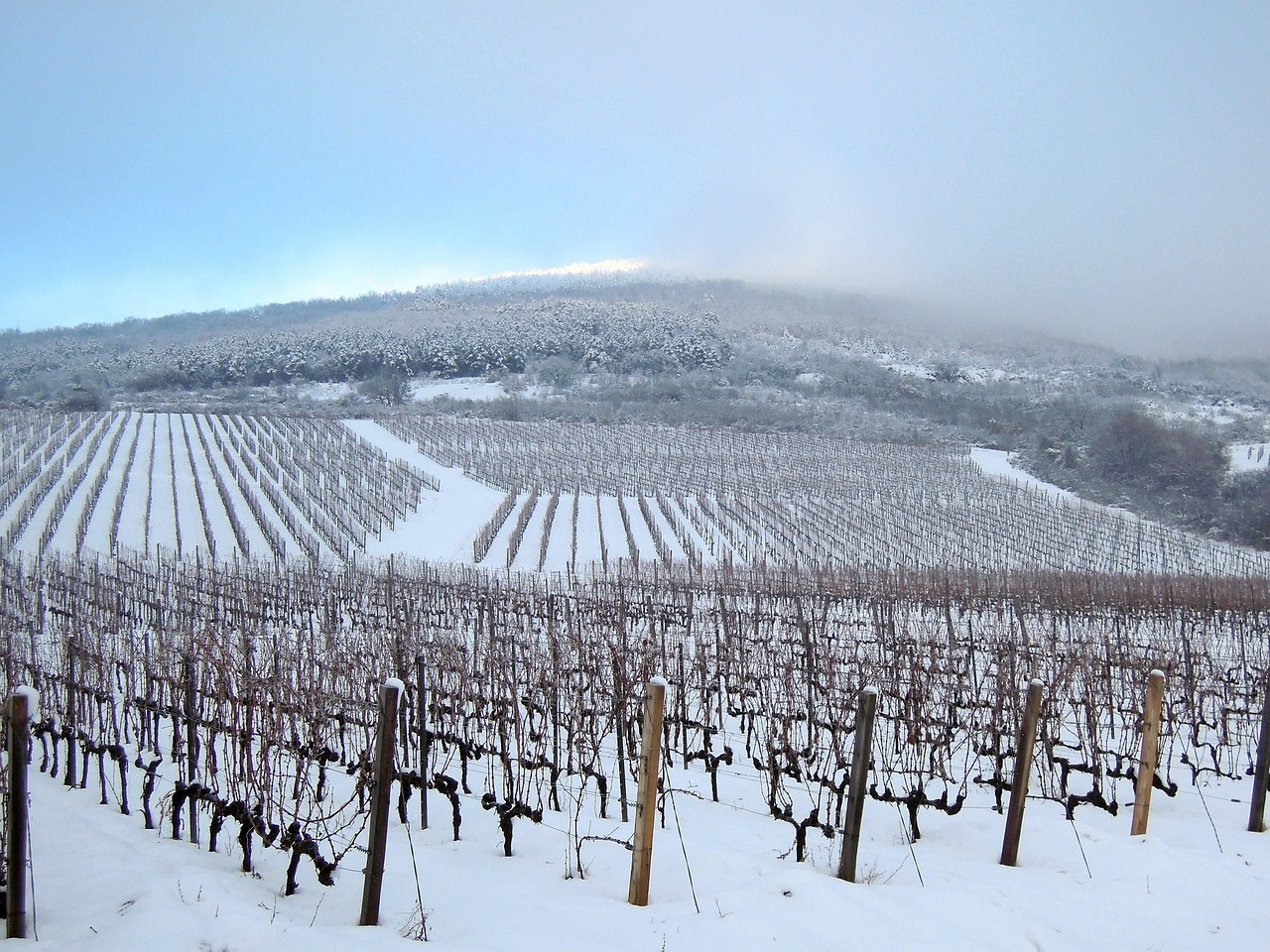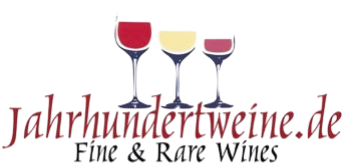Ice wine - the frozen delicacy of viticulture
Ice wine is one of the most unusual and labour-intensive specialities in the world of wine. This noble sweet wine variety, in which the grapes are only harvested when frozen, combines extreme climatic conditions with the highest level of craftsmanship. The history of ice wine goes back over two centuries, and its production has evolved from a fortuitous product to a precisely calculated masterpiece by winegrowers.
The origins of ice wine can be traced back to the early 19th century in Germany and Austria. According to historical records, the first documented ice wine was produced in Dromersheim in Rheinhessen in 1829, when winegrowers made a virtue of necessity and accidentally pressed frozen grapes. This happy coincidence revealed unexpected dimensions of flavour - a sweet, concentrated wine with a breathtaking acidity structure was born. In Austria, the first targeted ice wine production took place in Burgenland in 1858. This accidental discovery revolutionised sweet wine production in cooler climates and created a completely new category of wine.
The special thing about ice wine production lies in the unique production process. Unlike other sweet wines, the grapes are not attacked by noble rot (Botrytis cinerea), but are given their characteristic concentration through natural freezing. The grapes remain on the vine well into the winter and are only harvested when temperatures have reached at least -7°C (-8°C in Germany). This freezing has a fascinating physical effect: the water in the berries freezes into ice crystals, while the sugar, acids and flavourings remain in liquid form. The ice crystals are retained by the subsequent pressing of the frozen grapes, so that only the highly concentrated, sweet must is obtained.
The production of ice wine presents winegrowers with immense challenges. The grapes must remain healthy on the vine for weeks or even months while they are exposed to various weather conditions. Storms, rain, snow and hungry birds threaten the sensitive berries. Many winegrowers protect their ice wine grapes with nets or use special wire systems to stabilise the vines. Harvesting then usually takes place in the early hours of the morning when temperatures are at their lowest, often at -10°C or colder. This night harvest requires specially trained personnel to work in extreme conditions.
The grape varieties that are suitable for ice wine production must have special characteristics. In Germany and Austria, classic white varieties such as Riesling, Grüner Veltliner and Welschriesling dominate. Riesling is considered the king of ice wines - its natural acidity structure prevents the wine from appearing heavy or sticky despite its high residual sugar content (often 150-250 g/l). Red grape varieties such as Zweigelt or Blaufränkisch are also occasionally made into ice wine, although these are rather rare. In Canada, which has established itself as the leading ice wine nation in recent decades, Vidal, a particularly resistant hybrid grape, is often used.
The sensory characteristics of ice wine are unique and differ significantly from other sweet wines. High-quality ice wines have an intense flavour of ripe tropical fruit (mango, lychee, pineapple), combined with notes of honey, caramel and often a mineral component. Despite their sweetness, they are never overpowering, but remain surprisingly fresh and long-lasting on the palate thanks to their lively acidity. This perfect balance between sweetness and acidity makes ice wines the ideal accompaniment to desserts, but also surprisingly good partners for strong cheeses or foie gras.
The most important countries producing ice wine have each developed their own characteristic styles. Germany remains the country of origin and produces particularly elegant, acid-accentuated ice wines, especially from Riesling. Austria's ice wines are often somewhat stronger and full-bodied, while Canada comes up with extremely concentrated, opulent versions. The Canadian province of Ontario has developed into the world's largest ice wine region thanks to its reliably cold winters. Interestingly, there are now also considerable ice wine productions in unusual climate zones such as China (Liaoning province).
The quality criteria for ice wine are strictly regulated in the respective wine-growing countries. In Germany, ice wine must be made from grapes with at least 110° Oechsle (around 25% potential alcohol), which corresponds to extremely ripe grapes. The term "ice wine" is protected by law and may only be used for wines that have actually been made from naturally frozen grapes. Artificial freezing of the grapes is not permitted and would lead to downgrading to simple "sweet wine".
The economic importance of ice wine is considerable despite its low production volumes. Due to the extremely high labour input and the low must yield (often only 10-15% of a normal harvest), ice wines are among the most expensive wines in the world. A 375ml bottle of German ice wine starts at around 50 euros, while top wines can cost several hundred euros. Canadian ice wines, which are often bottled in even smaller 200ml bottles, reach similar price levels. The export market is particularly important for ice wine producers - Asian countries such as China and Japan have proven to be enthusiastic buyers of these liquid treasures.
The shelf life of high-quality ice wine is legendary. While simpler sweet wines should often be drunk within a few years, top ice wines can last for several decades under optimal conditions (stored in a cool, dark place). With age, they develop additional complex flavours of dried fruit, nuts and often an astonishing petrol-like note (especially in Riesling ice wines). This ability to develop makes ice wine a coveted collector's item for wine lovers.
The future of ice wine faces particular challenges. Climate change is threatening traditional production in traditional growing regions, as the necessary frost periods are becoming increasingly unreliable. Many winegrowers are therefore experimenting with vineyards at higher altitudes or special grape varieties that can hang on the vine for longer. At the same time, new possibilities are opening up in previously untypical regions - there are now even successful ice wine experiments in the USA and northern China.
Ice wine remains one of the most fascinating specialities in the world of wine, combining the forces of nature and human skill in a unique way. Each bottle tells the story of an exceptional vintage, a cold winter and the patience of winemakers who are prepared to face the whims of nature. This combination of risk, dedication and perfect craftsmanship makes every sip of ice wine a special experience - a frozen moment in the art of winemaking that melts on the tongue and lingers in the memory.

Tasting note on high-quality ice wines
Ice wine is one of the finest and most complex sweet wines in the world. Its production under extreme conditions gives it a unique flavour, lively acidity and remarkable longevity. The following tasting notes describe the typical character of high-quality ice wines, categorised according to sensory criteria.
1. appearance
Colour:
White ice wines: Light gold to intense amber (depending on the grape variety and age)
Red/rosé ice wines: Delicate ruby pink to deep garnet colour (e.g. Cabernet Franc ice wine)
Viscosity: High viscosity ("tear formation" on the glass) due to the concentrated sugar content (150-250 g/l residual sugar).
2. nose (aroma)
High-quality ice wines offer an explosive bouquet with several layers:
Primary aromas (fruit)
Tropical fruit: ripe mango, lychee, pineapple, passion fruit
Citrus: candied orange, lemon zest
Stone fruit: apricot jam, peach
(For red ice wines): Blackcurrant, raspberry, plum
Secondary flavours (complexity)
Honey (acacia, forest honey)
Caramelised sugar (crème brûlée, toffee)
Floral notes (orange blossom, jasmine)
Slight botrytis tones (almond skin, saffron) - if noble rot is involved
Tertiary aromas (ageing)
Petrol (typical for matured Riesling ice wine)
Nuts (hazelnut, walnut)
Dried fruit (date, fig)
Minerality (slate, pebbles)
3. palate (flavour & structure)
Entry: Opulent sweetness, immediately flooded with ripe fruit flavours.
Mid-palate: Lively acidity (especially in Riesling) cuts through the sweetness and brings balance.
Finish: Extremely long lasting (30+ seconds), with gradual development from fruit to complex spice flavours.
Texture
Mouthfeel: Silky-dense, almost oily, but never sticky thanks to the acidity.
Tannins (for red ice wines): Delicate, velvety.
4. typical grape varieties & their characteristics
| Grape variety | Character | Best regions |
|---|---|---|
| Riesling | Razor-sharp acidity, petrol note, minerality | Germany (Mosel, Rheingau) |
| Grüner Veltliner | Peppery spiciness, ripe peach flavours | Austria (Burgenland) |
| Vidal | Exotic fruit bomb (pineapple, mango), less acidity | Canada (Ontario) |
| Cabernet Franc | Red berries, violet-floral, milder than white ice wine | Canada, Austria |
5. vintage influences
Ideal conditions: Long, dry autumn for ripeness + sudden cold snap (without rain/snow).
Top vintages (examples):
Germany: 1998, 2001, 2012
Canada: 2016, 2018
Austria: 2019, 2021
6. serving recommendations
Temperature: 8-10°C (too cold emphasises the acidity, too warm has a sticky effect).
Glass: Small dessert wine glasses or white wine glasses with a narrow opening.
Decanting: Useful for young ice wines (under 5 years old) to open up the flavours.
7. ageing potential
Young ice wines (0-10 years): Dominance of fresh fruit.
Matured (10-20 years): Development towards dried fruit, honey and petrol.
Exceptional Rieslings: Can be stored for up to 30+ years (e.g. Egon Müller Scharzhofberger Eiswein).
Conclusion of the tasting
An outstanding ice wine combines three paradoxes:
Concentration & elegance: despite its extra sweetness, it remains fresh thanks to its acidity.
Power & finesse: Intense flavours, but with a delicate structure.
Immediate enjoyment & ageing potential.
Evaluation criteria:
95-100 points: Legendary (e.g. Dönnhoff Oberhäuser Brücke Eiswein)
90-94 points: Outstanding (typical of good Canadian Vidal ice wines)
85-89 points: Solid everyday ice wines.



